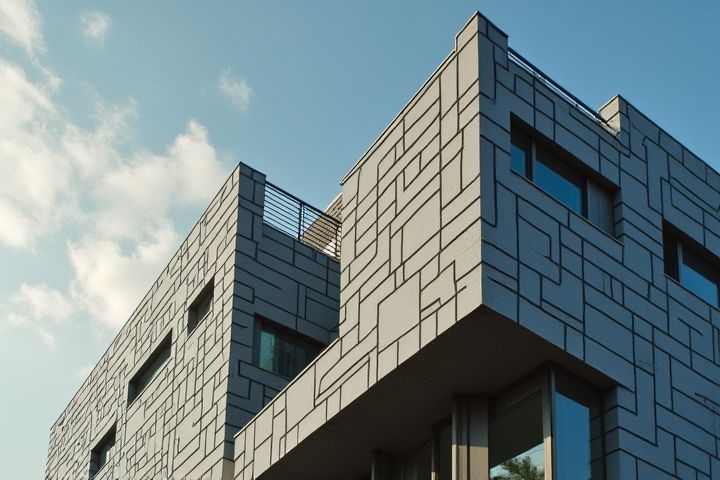
Nigeria's architecture is a vibrant reflection of its diverse cultural heritage and historical influences. Traditional Nigerian architecture features mud huts and thatched roofs, with unique designs varying among the country's 250 ethnic groups. In contrast, contemporary architecture showcases innovative use of materials, such as glass and steel, represented in iconic structures like the Eko Atlantic City in Lagos. Colonial influences are evident in many cities, blending European styles with local craftsmanship, resulting in buildings like the National Museum in Lagos. Understanding Nigeria's architectural landscape offers insights into its societal values, climate adaptability, and evolving urban trends.
Diverse architectural styles
Architecture in Nigeria showcases a rich tapestry of diverse styles, influenced by various ethnic groups, climates, and historical contexts. Traditional structures often feature materials like mud and thatch, while urban environments embrace contemporary designs using concrete and glass. The iconic premises of Hausa, Yoruba, and Igbo styles highlight intricate symbolism and cultural significance, reflected in decorative motifs and spatial arrangements. With a growing interest in sustainability, modern Nigerian architecture increasingly incorporates eco-friendly practices, merging traditional aesthetics with innovative techniques to address urbanization challenges.
Influence of colonial architecture
Colonial architecture in Nigeria showcases the blend of indigenous styles with European influences, primarily from British colonial rule in the 19th and early 20th centuries. Prominent structures, like the iconic Lagos City Hall and the Nigerian Railway Corporation building, reflect neoclassical and Gothic revival designs, characterized by their grand facades and intricate details. This architectural heritage not only signifies a historical relationship but also highlights the socio-political climate of the time, as the buildings were often symbols of authority and governance. Understanding this influence can deepen your appreciation of Nigeria's rich architectural tapestry, which continues to evolve by incorporating modern and traditional elements.
Use of local materials
Architecture in Nigeria prominently emphasizes the use of local materials, reflecting the country's rich cultural heritage and diverse geography. Traditional building methods often incorporate clay, laterite, bamboo, and thatch, promoting sustainability and environmental harmony. This practice not only supports local artisans and economies but also fosters a deep connection to the land and its resources. By choosing indigenous materials, Nigerian architecture demonstrates resilience while addressing contemporary needs in design and functionality.
Integration of traditional and modern design
Nigerian architecture exemplifies a unique blend of traditional styles and contemporary design elements, highlighting the country's rich cultural heritage. Notable structures often incorporate indigenous materials such as mud, bamboo, and thatch, harmoniously merging with modern constructions made from concrete and glass. Local craftsmanship plays a vital role, as artisans utilize time-honored techniques to create stunning facades and intricate details. This synthesis not only fosters a sense of identity but also addresses the diverse climatic conditions and urban challenges faced in Nigeria today.
Sustainable building practices
Architecture in Nigeria emphasizes sustainable building practices aimed at minimizing environmental impact while maximizing energy efficiency. Local materials, such as clay and bamboo, are increasingly utilized to reduce carbon footprints and promote ecological stability. Innovative designs often incorporate natural ventilation and solar energy systems, enhancing the overall comfort and sustainability of urban structures. By prioritizing these practices, architects in Nigeria not only address contemporary environmental challenges but also foster cultural identity through eco-friendly design principles.
Impact of climate on designs
Architecture in Nigeria significantly addresses the impact of climate through innovative design strategies tailored to the country's diverse environmental conditions. Sustainable materials, natural ventilation, and efficient water management systems are commonly integrated to enhance energy efficiency and reduce reliance on artificial cooling. Buildings often incorporate shaded outdoor spaces and green roofs, providing relief from the intense heat while promoting biodiversity. By prioritizing climate-resilient designs, architects not only ensure the functionality of structures but also contribute to the overall well-being of communities.
Prominent architects like Demas Nwoko
Nigerian architecture showcases the remarkable contributions of prominent figures such as Demas Nwoko, whose work blends traditional African aesthetics with modern design principles. His innovative structures often incorporate local materials and cultural motifs, reflecting Nigeria's rich heritage while addressing contemporary needs. Nwoko's emphasis on sustainability is evident in his designs, promoting environmental harmony through strategic use of natural light and ventilation. Exploring his architectural legacy offers insights into the evolving landscape of Nigeria's built environment and its potential for future development.
Rapid urbanization challenges
Nigeria's architecture is increasingly addressing the challenges posed by rapid urbanization, particularly in mega cities like Lagos and Abuja. Innovative designs integrate sustainable materials and energy-efficient technologies, responding to the need for affordable housing and infrastructure improvements. Architects are prioritizing urban planning strategies that enhance public spaces while promoting resilience against climate change and flooding. You can see this commitment to functionality and aesthetics reflected in contemporary structures that not only serve immediate needs but also aim to foster community engagement.
Role of cultural heritage
Architecture in Nigeria reflects a rich tapestry of cultural heritage, showcasing diverse styles influenced by the nation's myriad ethnic groups. Traditional structures, such as the Hausa's adobe houses and the Yoruba's intricately carved wooden buildings, symbolize local customs and communal values. Modern Nigerian architecture harmonizes contemporary designs with historical elements, promoting sustainable practices that respect environmental heritage. Engaging with local artisans and incorporating indigenous materials, architects enhance the narrative of Nigeria's identity and foster a sense of pride within communities.
Development of smart cities
Architecture in Nigeria emphasizes the integration of technology and sustainability in the development of smart cities. This approach incorporates advanced infrastructure, efficient public services, and intelligent transport systems to enhance urban living. You can see initiatives that prioritize green spaces, renewable energy, and digital connectivity, aiming to improve quality of life while addressing urban challenges. The resulting smart cities not only foster economic growth but also promote social well-being and environmental responsibility, reflecting Nigeria's vision for a modern urban future.
